Abstract
Clostridium difficile is a recognized cause of pseudomembranous (antimicrobial agent-associated) colitis and may be one of the causes of antimicrobial agent-induced diarrhea. A selective and differential agar medium that contains cycloserine, cefoxitin, fructose, and egg yolk (CCFA) was developed to facilitate the isolation of C. difficile from fecal specimens. Quantitative cultures of 16 stock strains of C. difficile on this medium (and on a medium containing cycloserine, fructose, and egg yolk) yielded counts equivalent to those obtained on blood agar; other media selective for clostridia, including Clostrisel agar, reinforced clostridial agar plus 0.2% para-cresol, and egg yolk-neomycin agar (the latter was inoculated with cultures subjected to prior heat shocking), were also tested and found to be inhibitory to the growth of C. difficile. Of 28 fecal or colostomy effluent specimens cultured on the above media, 14 yielded C. difficile. CCFA was found to be the most sensitive and selective of these media for the recovery of C. difficile. Colonies of C. difficile growing on CCFA had distinctive morphological and fluorescent properties which were sufficient for presumptive identification. CCFA should provide a rapid method for the screening of fecal specimens from patients with antimicrobial agent-associated diarrhea or colitis for C. difficile.
Full text
PDF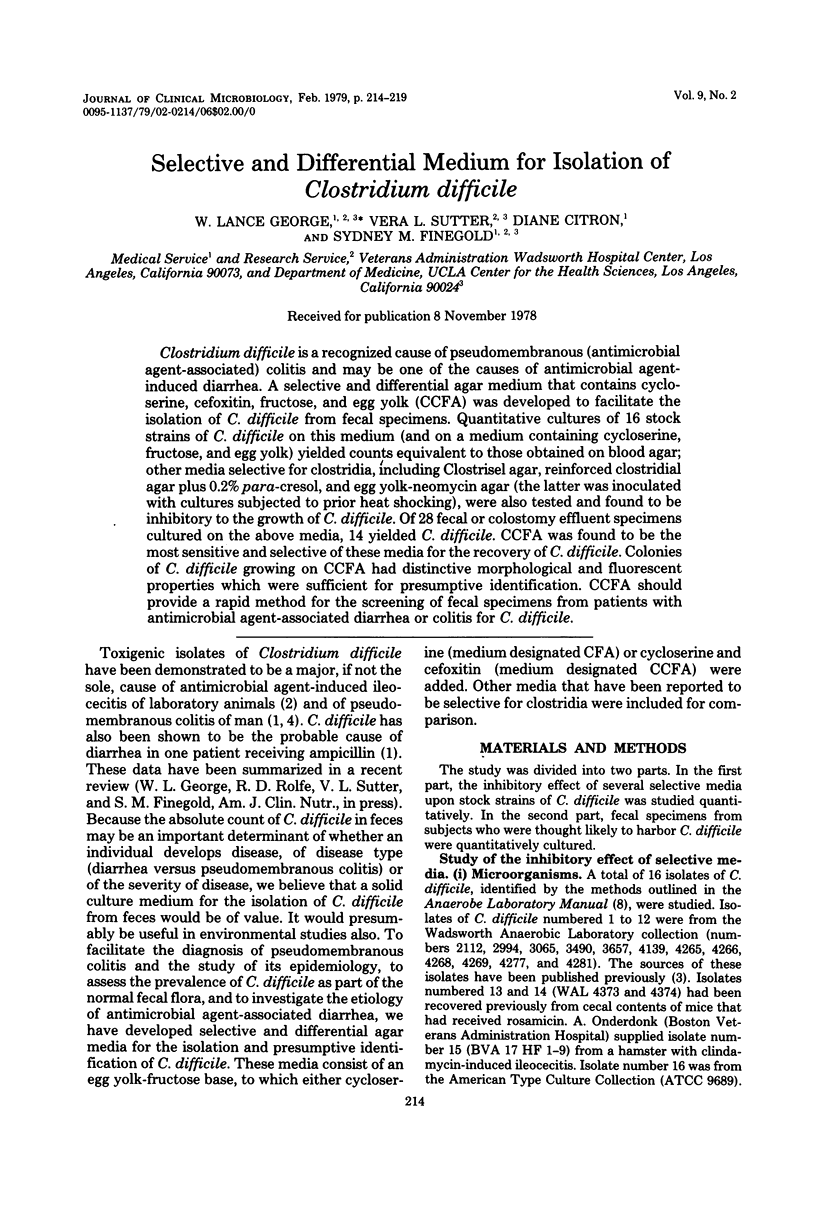
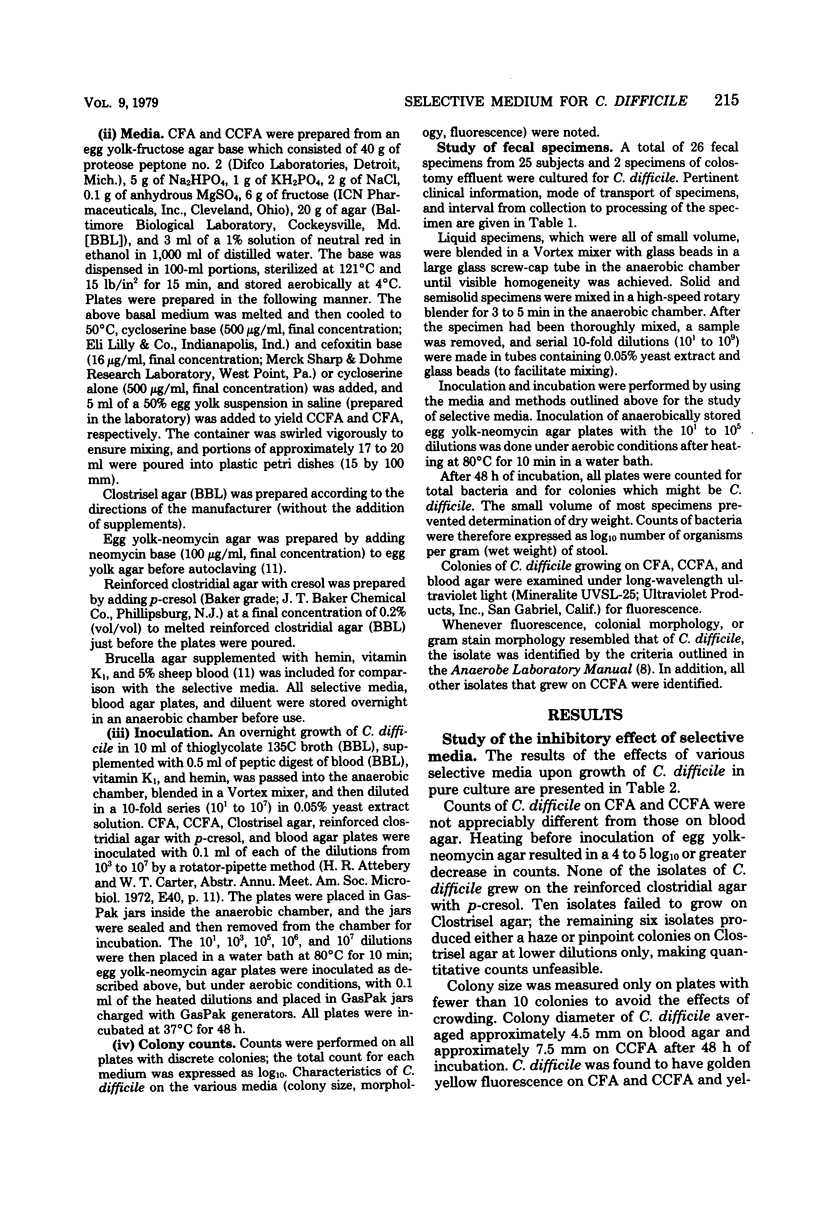
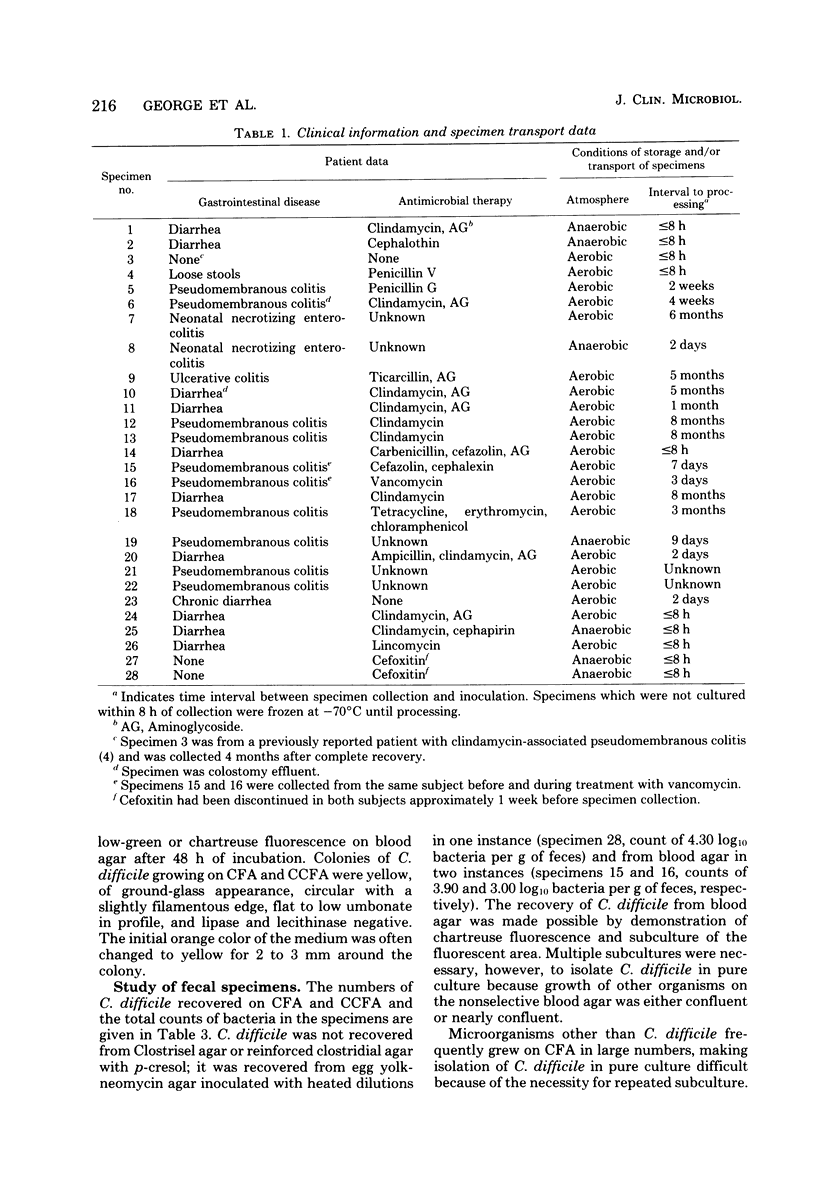
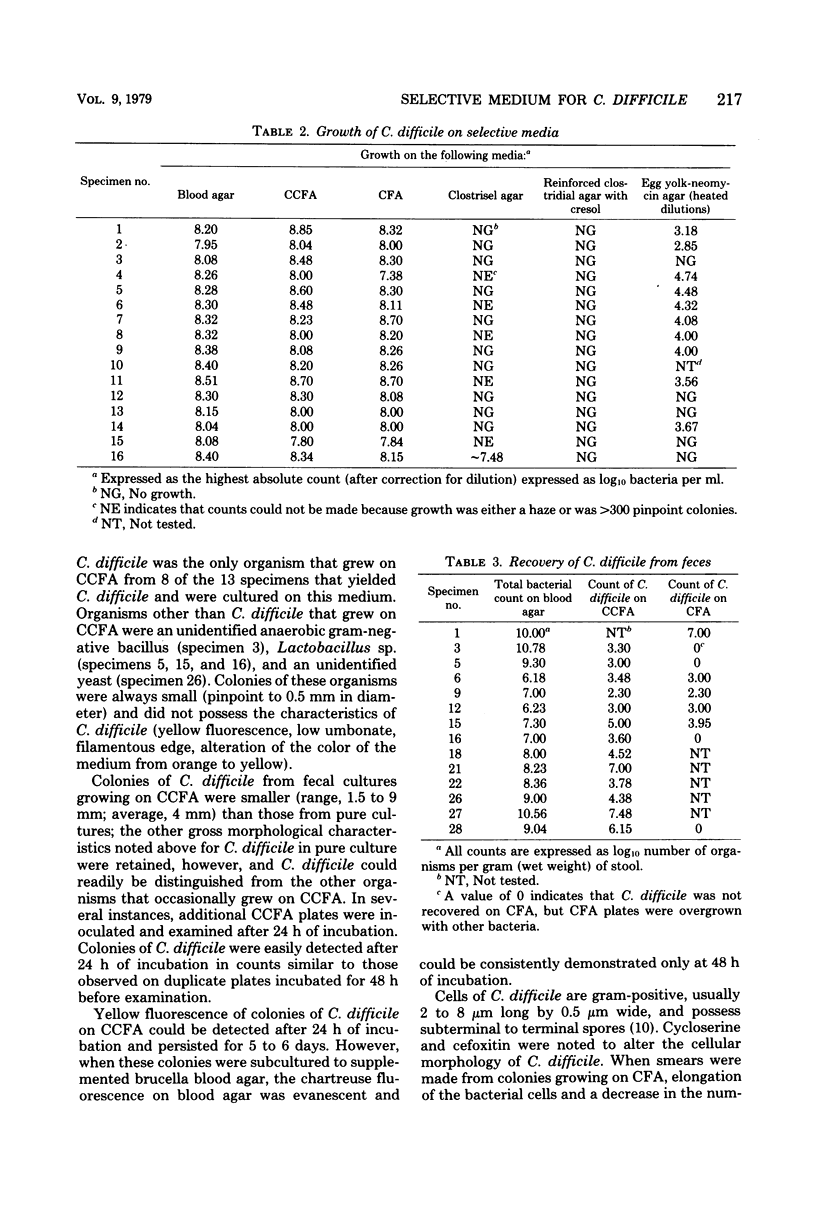
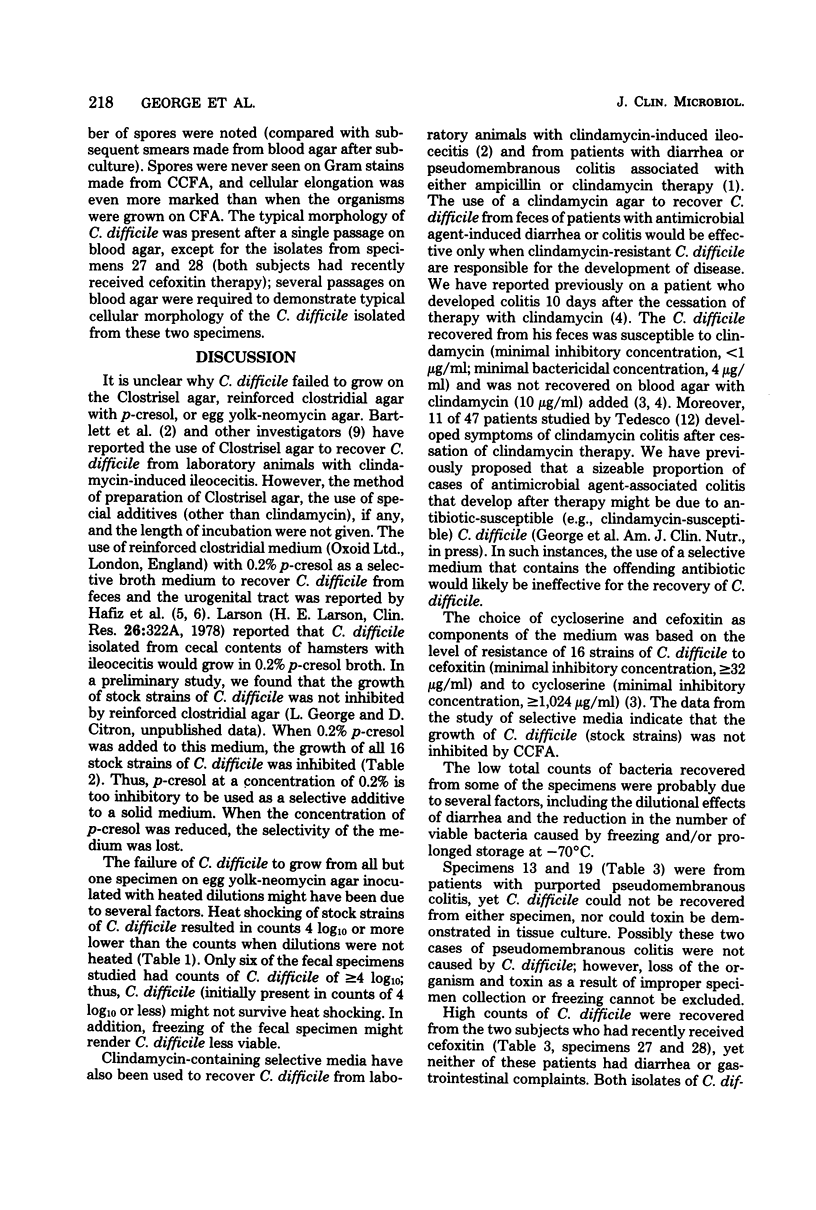
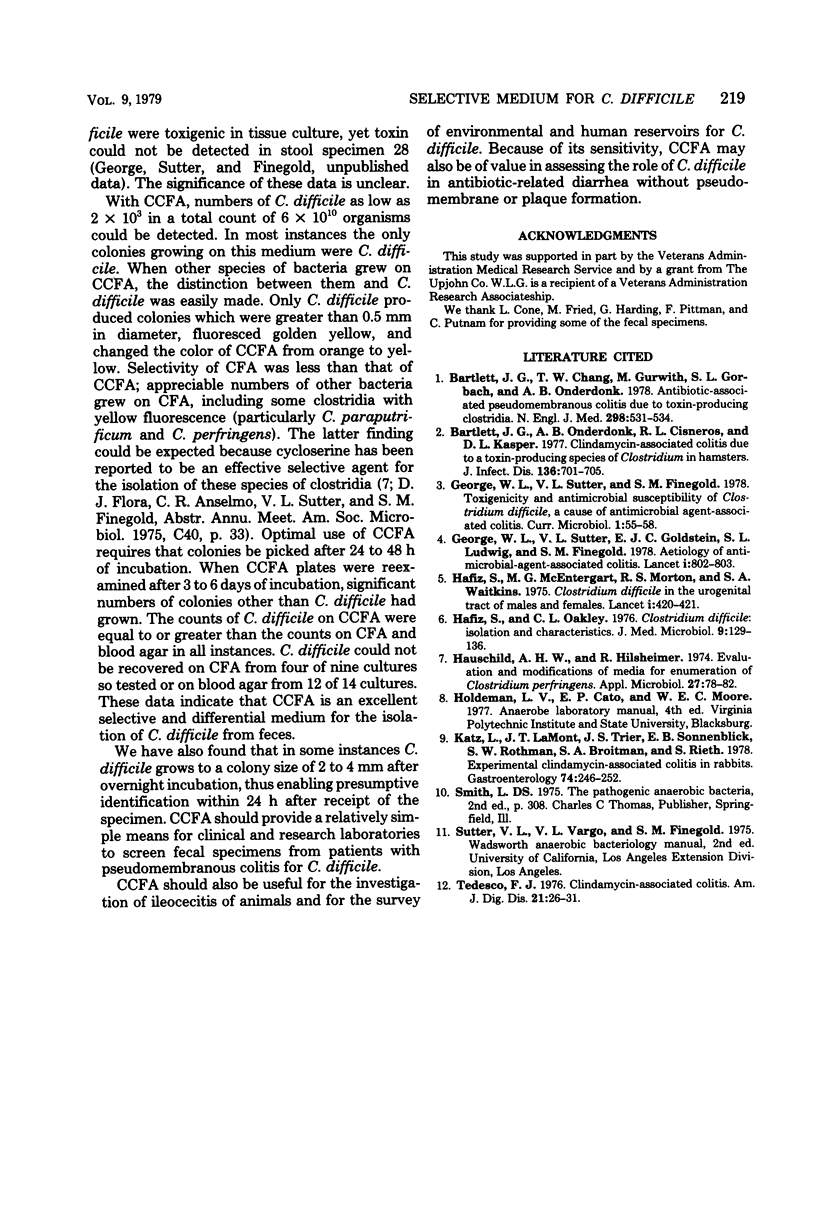
Selected References
These references are in PubMed. This may not be the complete list of references from this article.
- Bartlett J. G., Chang T. W., Gurwith M., Gorbach S. L., Onderdonk A. B. Antibiotic-associated pseudomembranous colitis due to toxin-producing clostridia. N Engl J Med. 1978 Mar 9;298(10):531–534. doi: 10.1056/NEJM197803092981003. [DOI] [PubMed] [Google Scholar]
- Bartlett J. G., Onderdonk A. B., Cisneros R. L., Kasper D. L. Clindamycin-associated colitis due to a toxin-producing species of Clostridium in hamsters. J Infect Dis. 1977 Nov;136(5):701–705. doi: 10.1093/infdis/136.5.701. [DOI] [PubMed] [Google Scholar]
- George W. L., Sutter V. L., Goldstein E. J., Ludwig S. L., Finegold S. M. Aetiology of antimicrobial-agent-associated colitis. Lancet. 1978 Apr 15;1(8068):802–803. doi: 10.1016/s0140-6736(78)93001-5. [DOI] [PubMed] [Google Scholar]
- Hafiz S., McEntegart M. G., Morton R. S., Waitkins S. A. Clostridium defficiel in the urogenital tract of males and females. Lancet. 1975 Feb 22;1(7904):420–421. doi: 10.1016/s0140-6736(75)91489-0. [DOI] [PubMed] [Google Scholar]
- Hafiz S., Oakley C. L. Clostridium difficile: isolation and characteristics. J Med Microbiol. 1976 May;9(2):129–136. doi: 10.1099/00222615-9-2-129. [DOI] [PubMed] [Google Scholar]
- Hauschild A. H., Hilsheimer R. Evaluation and modifications of media for enumeration of Clostridium perfringens. Appl Microbiol. 1974 Jan;27(1):78–82. doi: 10.1128/am.27.1.78-82.1974. [DOI] [PMC free article] [PubMed] [Google Scholar]
- Katz L., LaMont J. T., Trier J. S., Sonnenblick E. B., Rothman S. W., Broitman S. A., Rieth S. Experimental clindamycin-associated colitis in rabbits. Evidence of toxin-mediated mucosal damage. Gastroenterology. 1978 Feb;74(2 Pt 1):246–252. [PubMed] [Google Scholar]
- Tedesco F. J. Clindamycin-associated colitis. Review of the clinical spectrum of 47 cases. Am J Dig Dis. 1976 Jan;21(1):26–32. doi: 10.1007/BF01074135. [DOI] [PubMed] [Google Scholar]


